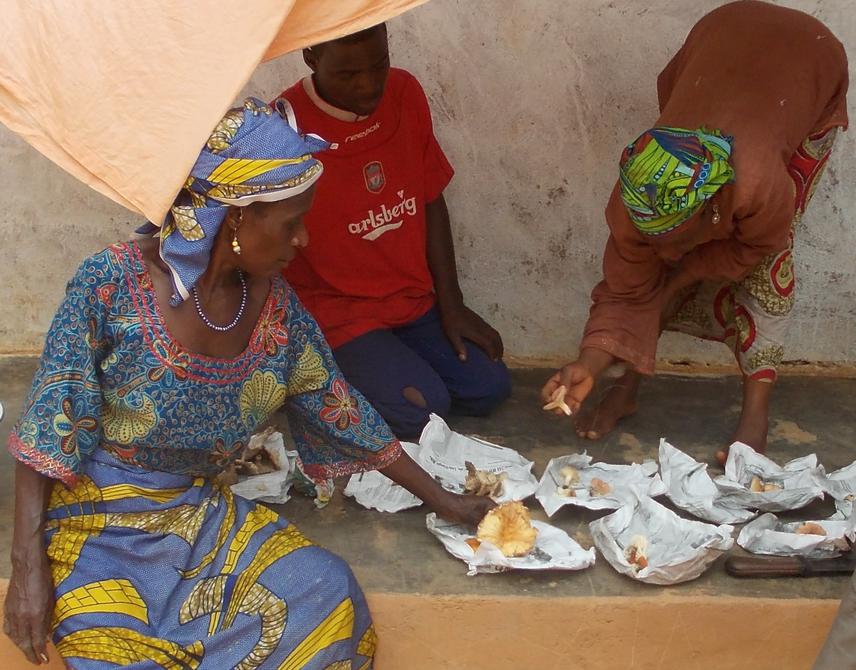Njouonkou André Ledoux
Other projects
13 Jul 2011
Study of the Diversity and the Ethno Mycology of Wild Edible Fungi in the Noun Division (Cameroon) for the Preservation of Natural Ecosystems
14 Dec 2016
Mushroom Cultivation and Planting and Indigenous Trees for Nature Conservation in Foumban Subdivision (Cameroon)
This project is to educate population of Foumban subdivision on the importance fungi and the conservation of the environment while studying the diversity of local mushroom and ethnomycology.

Science of local identification of mushrooms.
During works of our first Rufford Small Grant for Nature Conservation, we noted that Bamoun people originally have a particular traditional knowledge and behavior on mushrooms and their uses. We also noted that the local environment had a great mycological diversity with species of almost all main groups of mushrooms. Unfortunately, this local knowledge is disappearing at the same time with the local ecosystems. Meanwhile Bamoun people have very little scientific knowledge on fungi and their importance.
In the continuation to the first grant, this second project is to intensify the sensitization of population of Foumban Subdivision on the importance of fungi and the necessity of the preservation of their environment while continuing studies of diversity of mushrooms in the area and the local knowledge on these organisms. In addition, we are going to share the results of the first study with this population.
Our caravan, constituted by scientists, jurists and traditional doctors will go around villages of Foumban subdivision to present a series of public conferences (open to everybody in both French and Bamoun languages) on mushrooms and environmental conservation. The main topics of these conferences will be focused on fungi biology, ecology and importance, the impact of human activities on the local ecosystems (forest, savannah and wetland), the Environmental law of Cameroon, problems of the conservation of their particular environment and on ethnomycology.
In each village, the conference will be follow by a field work during which together with the local population, we are going to visit the local ecosystems and discuss about their stat and the issue of their conservation. At the same time, we will collect samples of mushrooms found in the area. Back in the village, all samples of mushrooms will be exposed to the public for their local identification and the determination of their uses. These mushrooms, photographed, will be described both macroscopically and microscopically for their scientific identification in order to contribute to the documentation of Cameroonian fungi and their uses.